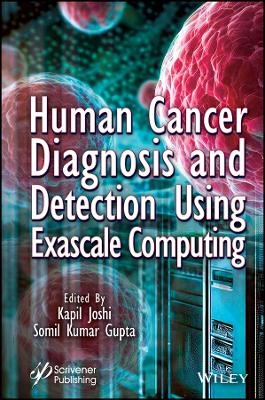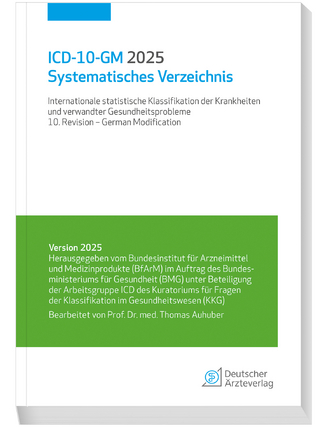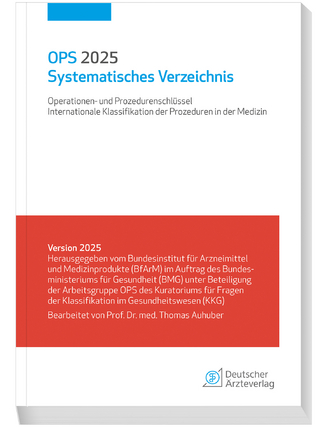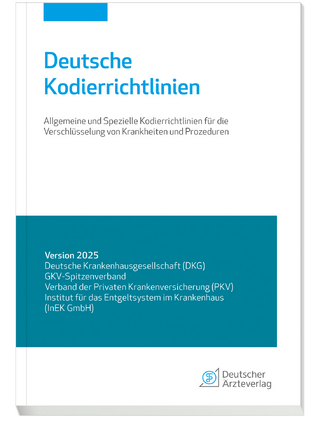
Human Cancer Diagnosis and Detection Using Exascale Computing
Sybex Inc.,U.S. (Verlag)
978-1-394-19767-5 (ISBN)
Exascale computing has the potential to increase our ability in terms of computation to develop efficient methods for a better healthcare system. This technology promises to revolutionize cancer diagnosis and detection, ushering in an era of unprecedented precision, speed, and efficiency. The fusion of exascale computing with the field of oncology has the potential to redefine the boundaries of what is possible in the fight against cancer.
The book is a comprehensive exploration of this transformative unification of science, medicine, and technology. It delves deeply into the realm of exascale computing and its profound implications for cancer research and patient care. The 18 chapters are authored by experts from diverse fields who have dedicated their careers to pushing the boundaries of what is achievable in the realm of cancer diagnosis and detection. The chapters cover a wide range of topics, from the fundamentals of exascale computing and its application to cancer genomics to the development of advanced imaging techniques and machine learning algorithms. Explored is the integration of data analytics, artificial intelligence, and high-performance computing to move cancer research to the next phase and support the creation of novel medical tools and technology for the detection and diagnosis of cancer.
Audience
This book has a wide audience from both computer sciences (information technology, computer vision, artificial intelligence, software engineering, applied mathematics) and the medical field (biomedical engineering, bioinformatics, oncology). Researchers, practitioners and students will find this groundbreaking book novel and very useful.
Kapil Joshi is an assistant professor in the Computer Science & Engineering Department, Uttaranchal Institute of Technology in Dehradun, Uttarakhand, India. Joshi completed a PhD on the topic of Image Quality Enhancement using Fusion Techniques. He has 8 years of academic experience in his areas of interest in Operating systems, Computer Networks, Web Technology, Data Structure, and Java. He has published various patents, research papers, and two books. In 2021, he was awarded the 'Best Young Researcher' Award in Global Education and Corporate Leadership received by Life Way Tech India Pvt. Ltd. Somil Kumar Gupta is an assistant professor in the School of Computing, DIT University, Dehradun, Uttarakhand, India. He has fourteen years of experience in academics and research. He has published many research articles in reputed national and international conferences and journals. He has published more than 16 patents in the Indian Patent Office.
Preface xiii
1 Evaluating the Impact of Healthcare 4.0 on the Performance of Hospitals 1
Pramod Kumar, Nitu Maurya, Keerthiraj, Somanchi Hari Krishna, Geetha Manoharan and Anupama Bharti
1.1 Introduction 2
1.2 Literature Review 4
1.3 Methodology 6
1.4 Result and Discussion 9
1.5 Conclusion 11
2 Human Breast Cancer Classification Employing the Machine Learning Ensemble 19
Sreenivas Mekala, S. Srinivasulu Raju, M. Gomathi, Naga Venkateshwara Rao K., Kothandaraman D. and Saurabh Sharma
2.1 Introduction 20
2.2 Literature Review 22
2.3 Methodology 24
2.4 Results and Discussion 28
2.5 Conclusion 31
3 Multi-Objective Differential Development Using DNN for Multimodality Medical Image Fusion 35
M. Ranjith Kumar, Abhishek Dondapati, Dilip Kumar Sharma, Prakash Pareek, Rajchandar K. and S. Shalini
3.1 Introduction 36
3.2 Literature Review 37
3.3 Methodology 38
3.4 Result and Discussion 41
3.5 Conclusion 47
4 Multimodal Deep Learning Analysis for Biomedical Data Fusion 53
Divyanshu Sinha, B. Jogeswara Rao, D. Khalandar Basha, Parvathapuram Pavan Kumar, N. Shilpa and Saurabh Sharma
4.1 Introduction 54
4.2 Literature Review 56
4.3 Methodology 58
4.4 Results and Discussion 62
4.5 Conclusion 64
5 Developing Robot-Based Neurorehabilitation Exercises Using a Teaching–Training Process 71
W. Vinu, Sonali Vyas, A. Chandrashekhar, T. Ch. Anil Kumar, T. Raghu and Mohit Tiwari
5.1 Introduction 72
5.2 Literature Review 74
5.3 Research Methodology 77
5.4 Results 78
5.5 Conclusion 81
5.6 Future Research Directions 82
6 Investigation on Introduction to Heterogeneous Exascale Computing in the Medical Field 87
M. Pyingkodi, Raju Shanmugam, Dilip Kumar Sharma, Deepesh Lall, S. Deepan and B. Dasu
6.1 Introduction 88
6.2 Literature Review 89
6.3 Research Methodology 92
6.4 Results and Discussion 94
6.5 Conclusion 96
6.6 Future Research Direction 96
7 Adoption of Cloud Computing in the Healthcare Field Using the SEM Approach 101
R. Chithambaramani, C. Balakumar, Dilip Kumar Sharma, Keyur Patel, Bhavana Jamalpur and M. R. Arun
7.1 Introduction 102
7.2 Literature Review 104
7.3 Research Methodology 106
7.4 Results and Discussion 107
7.5 Implications 110
7.6 Conclusion 110
7.7 Future Research Directions 111
8 Chest X-Ray Analysis for COVID-19 Diagnosis Using an Exascale Computation and Machine Learning Framework 115
M. Dhinakaran, S. Deivasigamani, Saikat Kar, Nishakar Kankalla, V. Malathy and Saurabh Sharma
8.1 Introduction 116
8.2 Literature Review 117
8.3 Research Methodology 119
8.4 Analysis and Discussion 120
8.5 Conclusion 130
9 3D-Printed Human Organ Designs with Tissue Physical Characteristics and Embedded Sensors 135
A. Chandrashekhar, R. Raffik, R. Sridevi, M. Sindhu, Kodela Rajkumar and Tarun Jaiswal
9.1 Introduction 136
9.2 Literature Review 137
9.3 Methodology 139
9.4 Analysis and Discussion 140
9.5 Conclusion 149
10 Fast Computing Network Infrastructure for Healthcare Systems Based on 6G Future Perspective 153
Ranjeet Yadav, S. L. Prathapa Reddy, Akshay Upmanyu, Ravi Kumar Sanapala, V. Malathy and Umakant Bhaskar Gohatre
10.1 Introduction 154
10.2 Literature Review 155
10.3 Research Methodology 157
10.4 Analysis and Discussion 158
10.5 Conclusion 167
11 Analysis of Multimodality Fusion of Medical Image Segmentation Employing Deep Learning 171
G. Santhakumar, Dattatray G. Takale, Swati Tyagi, Raju Anitha, Mohit Tiwari and Joshuva Arockia Dhanraj
11.1 Introduction 172
11.2 Literature Review 174
11.3 Research Methodology 176
11.4 Results and Discussion 177
11.5 Conclusion 180
12 New Perspectives, Challenges, and Advances in Data Fusion in Neuroimaging 185
Pedada Sujata, Dattatray G. Takale, Swati Tyagi, Saniya Bhalerao, Mohit Tiwari and Joshuva Arockia Dhanraj
12.1 Introduction 186
12.2 Literature Review 188
12.3 Research Methodology 190
12.4 Results and Discussion 191
12.5 Challenges 194
12.6 Conclusion 195
13 The Potential of Cloud Computing in Medical Big Data Processing Systems 199
A. Mallareddy, M. Jaiganesh, Sophia Navis Mary, Manikandan K., Umakant Bhaskar Gohatre and Joshuva Arockia Dhanraj
13.1 Introduction 200
13.2 Literature Review 202
13.3 Materials and Method 203
13.4 Result and Discussion 206
13.5 Conclusion 210
14 Deep Learning (DL) on Exascale Computing to Speed Up Cancer Investigation 215
D. Rubidha Devi, S. Ashwini, Samreen Rizvi, P. Venkata Hari Prasad, Mohit Tiwari and Joshuva Arockia Dhanraj
14.1 Introduction 216
14.2 Literature Review 217
14.3 Research Methodology 219
14.4 Analysis and Discussion 220
14.5 Conclusion 223
15 Current Breakthroughs and Future Perspectives in Surgery Based on AI-Based Computing Vision 227
Suneet Gupta, Madhu Kumar Vanteru, Sanjeevkumar Angadi, Manikandan K., Mohit Tiwari and Joshuva Arockia Dhanraj
15.1 Introduction 228
15.2 Literature Review 229
15.3 Research Methodology 231
15.4 Analysis and Discussion 232
15.5 Conclusion 235
16 MRI-Based Brain Tumor Detection Using Machine Learning 239
Vivek Kumar, Pinki Chugh, Bhuprabha Bharti, Anchit Bijalwan, Amrendra Tripathi, Ram Narayan and Kapil Joshi
16.1 Introduction 240
16.2 Pre-Processing 242
16.3 Segmentation 243
16.4 Feature Extraction 244
16.5 SVM Classifier 246
16.6 Methodology 248
16.7 Conclusion 249
17 Chili Pepper as a Natural Therapeutic Drug: A Review of Its Anticancer and Antioxidant Properties and Mechanism of Action Using the Machine Learning Approach 253
Rachana Joshi, Narinder Kumar, B. S. Rawat, Reena Dhyani, Hemlata Sharma and Rajiv Kumar
17.1 Introduction 254
17.2 Machine Learning Technique 255
17.3 Composition Profile 255
17.4 Reactions of Phytochemicals to Drying and Ripening 256
17.5 Antioxidant Activity 257
17.6 Anticancer Activity 258
17.7 Activities that are Anti-Inflammatory and Relieve Pain 260
17.8 Activities Controlling Diabetes and Hyperglycemia 260
17.9 The Impacts of Anticholesteremic Activity on Lipid Metabolism 262
17.10 Anticlotting Effect 262
17.11 Antimicrobial Activity 263
17.12 Immune Checkpoint Signaling 263
17.13 Suppression of Antitumor Immune Response 264
17.14 Antigen Masking 264
17.15 Immune-Based Cancer Therapies 264
17.16 Other Miscellaneous Medicinal Values 265
17.17 Conclusion 267
18 Exascale Computing: The Next Frontier of High-Performance Computing 279
Rashmi M., Girija D.K. and Yogeesh N.
18.1 Introduction 280
18.2 Exascale Computing 282
18.3 Exascale Computing Challenges 299
18.4 Future Lookup 301
18.5 Conclusion 302
References 303
Index 305
| Erscheinungsdatum | 28.02.2024 |
|---|---|
| Verlagsort | New York |
| Sprache | englisch |
| Gewicht | 780 g |
| Themenwelt | Informatik ► Weitere Themen ► Bioinformatik |
| Medizin / Pharmazie ► Medizinische Fachgebiete ► Onkologie | |
| Technik ► Medizintechnik | |
| ISBN-10 | 1-394-19767-5 / 1394197675 |
| ISBN-13 | 978-1-394-19767-5 / 9781394197675 |
| Zustand | Neuware |
| Informationen gemäß Produktsicherheitsverordnung (GPSR) | |
| Haben Sie eine Frage zum Produkt? |
aus dem Bereich


